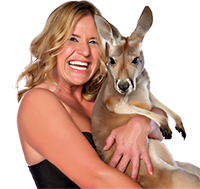 | Kangaroo LanieAmerica's Wild Girl | 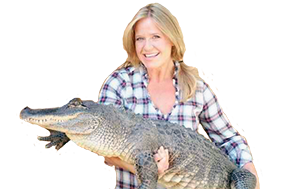
|
..And Her Animal Friends Seen at Events Nationwide | ||
|
| 

|
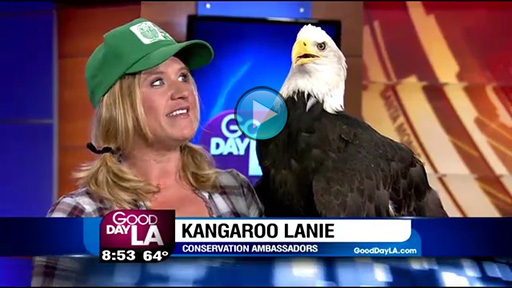 `
` 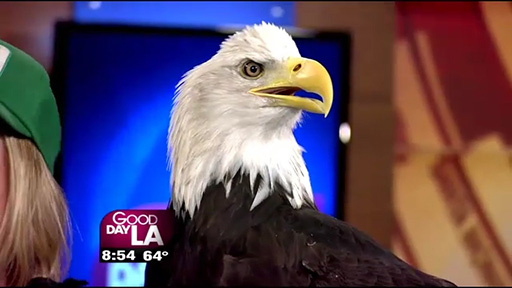
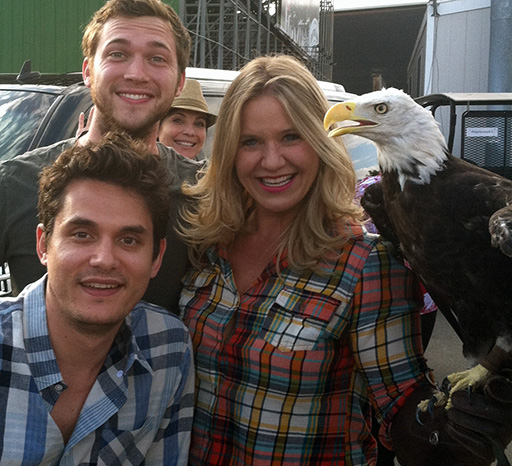
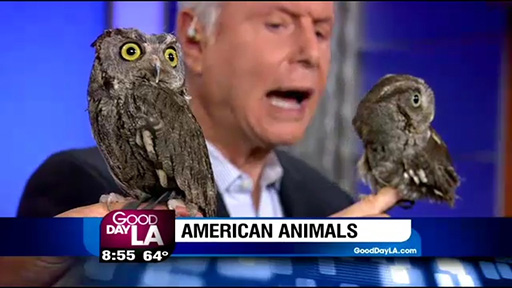

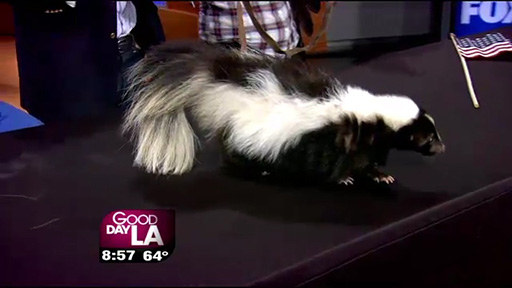
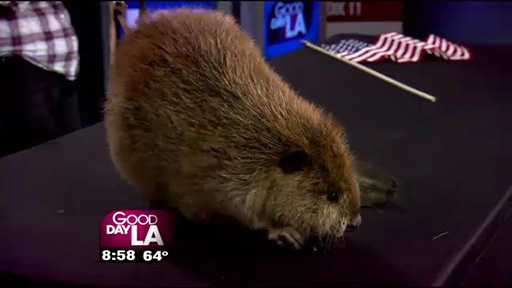
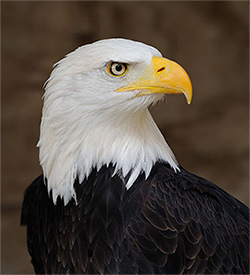
This bird of prey is the symbol of the United States. It represents the vision, beauty, and strength of America. It is believed that the bald eagle has vision that is eight times better than humans. To put that into perspective - a bald eagle could read a newspaper from across a football field! The stern look of their face is created by a boney structure called a brow ridge - or built in "sun visor" - above their eyes that helps them to hunt during the daytime. Their great vision is no doubt symbolic of the democracy of America.
The bald eagle is a beautiful bird whose feathers are entirely brown as juveniles. Although they are full grown in physical size by just 6 months old - they do not develop their characteristic adult plumage until they are 5-7 years old. It is at this time that the bald eagle's head and tail feathers have turned white and their beak has turned yellow. Bald eagles are monogamous and find their life long mate once they become adults at approximately 7 years old. They can live into their fifties! Males and females look identical except that females are larger than males.
The bald eagle's size is deceiving - they appear as though they may weigh upwards of 25 pounds - however, like all flying birds, the eagle has very light weight bones and feathers and therefore females typically weigh less than 14 pounds and males less than 10 pounds.
The strength of this regal bird is impressive. Their long, sharp, and thick talons act like spears when catching prey. And while the bald eagle's main diet consists of fish, they will also catch small mammals when the opportunity arrives. The bald eagle's feet are incredibly strong - they have enough pressure to pop a car tire! It is certainly the symbolism of this amazing bird's strength, beauty, and vision that make it the representation of the United States of America.
Seneca the bald eagle was placed through the United States Fish and Wildlife Service after being injured as a fledgling in Washington State. Her left wing sustained permanent structural damage when she became tangled in telephone wire when learning to fly. Lanie and Seneca have a special bond since Lanie has been the primary care provider for Seneca for the last 8 years. Seneca is 9 years old and she weighs 10 pounds. Her favorite food is salmon. Seneca is an amazing animal ambassador and often brings tears to eyes when people are able to meet this spectacular symbol of freedom in person.

A kangaroo is a marsupial from the family Macropodidae (macropods, meaning 'large foot'). In common use the term is used to describe the largest species from this family, especially those of the genus Macropus, red kangaroo, antilopine kangaroo, eastern grey kangaroo and western grey kangaroo.[1] Kangaroos are endemic to the country of Australia. The smaller macropods are found in Australia and New Guinea.
Kangaroos have large, powerful hind legs, large feet adapted for leaping, a long muscular tail for balance, and a small head. Like most marsupials, female kangaroos have a pouch called a marsupium in which joeys complete postnatal development.
The kangaroo is a national symbol of Australia: its emblem is used on the Australian coat of arms,on some of its currency,as well as by some of Australia's well known organisations, including Qantas.The kangaroo is important to both Australian culture and the national image and consequently there are numerous popular culture references.
Kangaroos have chambered stomachs similar to those of cattle and sheep. They regurgitate the vegetation they have eaten, chew it as cud, and then swallow it again for final digestion. Different species of kangaroos have different diets, although all are strict herbivores. The eastern grey kangaroo is predominantly a grazer eating a wide variety of grasses whereas some other species (e.g. the red kangaroo) include significant amounts of shrubs in the diet. The smaller species of kangaroos also consume hypogeal fungi. Many species are nocturnal[26] and crepuscular,[27][28] usually spending the days resting in shade and the cool evenings, nights and mornings moving about and feeding.
Because of its grazing, kangaroos have developed specialised teeth. Its incisors are able to crop grass close to the ground, and its molars chop and grind the grass. Since the two sides of the lower jaw are not joined together, the lower incisors are farther apart, giving the kangaroo a wider bite. The silica in grass is abrasive, so kangaroo molars move forward as they are ground down, and eventually fall out, replaced by new teeth that grow in the back.
Groups of kangaroos are called mobs. The size and stability of the mobs vary between geographic regions,with eastern Australia having larger and more stable aggregations than in arid areas farther west.Larger aggregations display high amounts of interactions and complex social structures, comparable to that of ungulates.One common behaviour is nose touching and sniffing which mostly occurs when an individual joins a group.The kangaroos performing the sniffing gain much information from smell cues. This behaviour enforces social cohesion without consequent aggression. During mutual sniffing, if one kangaroo is smaller it will hold its body closer to the ground and its head will quiver, this is possibly a form of submission.Most other non-antagonistic behaviour occurs between mothers and their young. Mother and young reinforce their bond though grooming. A mother will groom her young during or after it is suckling.A joey will nuzzle its mother's pouch if it wants access to it.
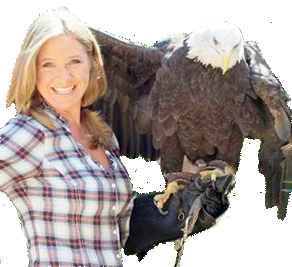 | Copyright 2012-2024, Kangaroo Lanie -- All Rights Reserved | 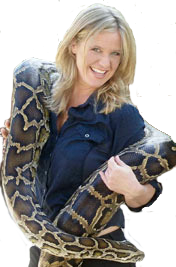
|
..And Her Animal Friends Seen at Events Nationwide | ||
|
| ||
|
Make sure to visit the Conservation Ambassadors Website. |